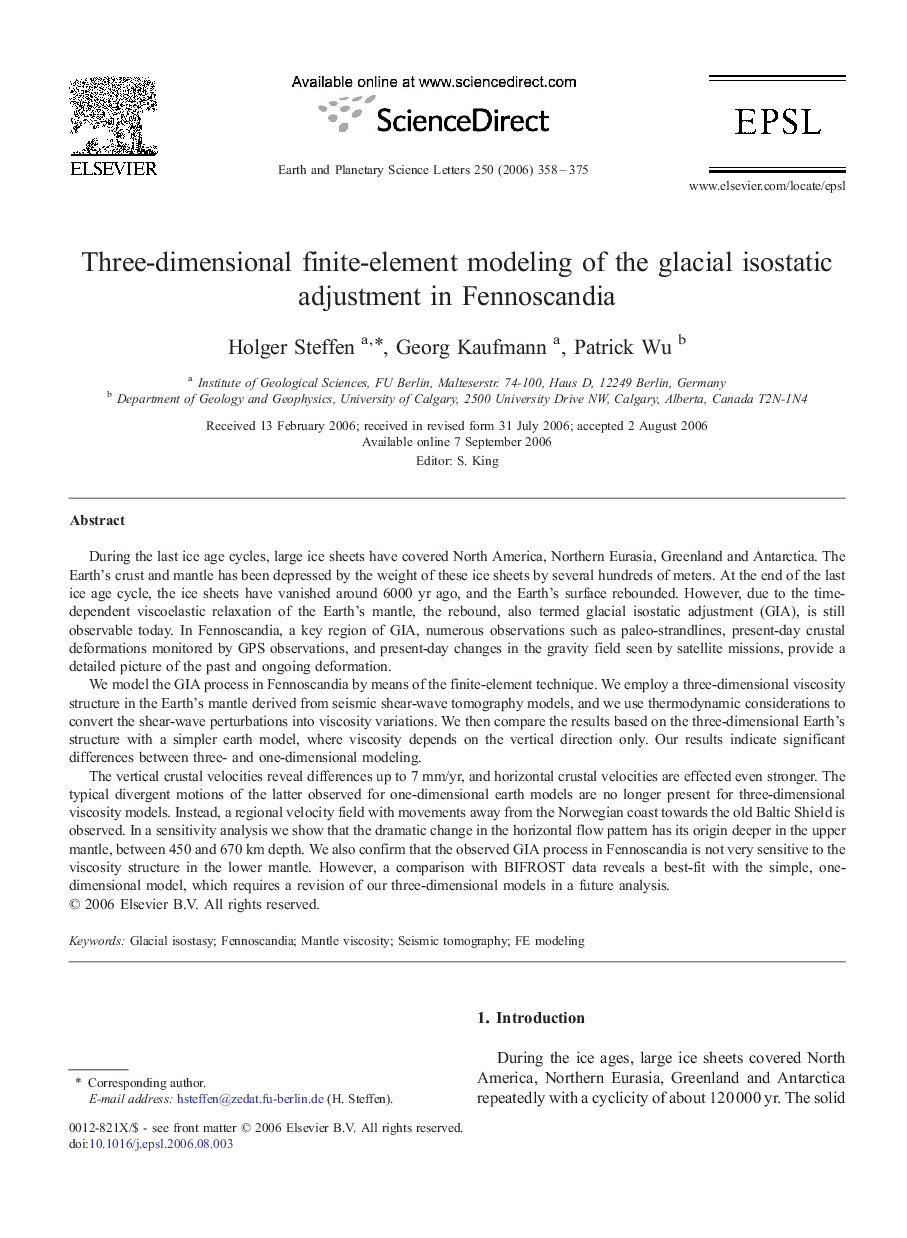| کد مقاله | کد نشریه | سال انتشار | مقاله انگلیسی | نسخه تمام متن |
|---|---|---|---|---|
| 4680709 | 1634935 | 2006 | 18 صفحه PDF | دانلود رایگان |

During the last ice age cycles, large ice sheets have covered North America, Northern Eurasia, Greenland and Antarctica. The Earth's crust and mantle has been depressed by the weight of these ice sheets by several hundreds of meters. At the end of the last ice age cycle, the ice sheets have vanished around 6000 yr ago, and the Earth's surface rebounded. However, due to the time-dependent viscoelastic relaxation of the Earth's mantle, the rebound, also termed glacial isostatic adjustment (GIA), is still observable today. In Fennoscandia, a key region of GIA, numerous observations such as paleo-strandlines, present-day crustal deformations monitored by GPS observations, and present-day changes in the gravity field seen by satellite missions, provide a detailed picture of the past and ongoing deformation.We model the GIA process in Fennoscandia by means of the finite-element technique. We employ a three-dimensional viscosity structure in the Earth's mantle derived from seismic shear-wave tomography models, and we use thermodynamic considerations to convert the shear-wave perturbations into viscosity variations. We then compare the results based on the three-dimensional Earth's structure with a simpler earth model, where viscosity depends on the vertical direction only. Our results indicate significant differences between three- and one-dimensional modeling.The vertical crustal velocities reveal differences up to 7 mm/yr, and horizontal crustal velocities are effected even stronger. The typical divergent motions of the latter observed for one-dimensional earth models are no longer present for three-dimensional viscosity models. Instead, a regional velocity field with movements away from the Norwegian coast towards the old Baltic Shield is observed. In a sensitivity analysis we show that the dramatic change in the horizontal flow pattern has its origin deeper in the upper mantle, between 450 and 670 km depth. We also confirm that the observed GIA process in Fennoscandia is not very sensitive to the viscosity structure in the lower mantle. However, a comparison with BIFROST data reveals a best-fit with the simple, one-dimensional model, which requires a revision of our three-dimensional models in a future analysis.
Journal: Earth and Planetary Science Letters - Volume 250, Issues 1–2, 15 October 2006, Pages 358–375